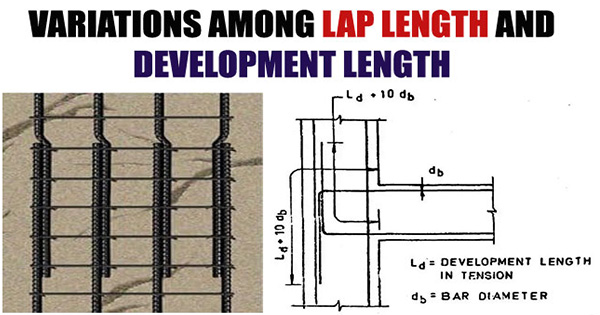Variations among lap length and development length

Lap Length
At the time of arranging the steel in RC structure, when the necessary length of a bar is not accessible adequately to form a design length then lapping is provided.
Lap Length stands for the length for overlapping of bar necessary to securely transmit stress from one bar to another one. Lap length varies in the context of tension and compression zones and primarily based on concrete grade and steel. If it is required to lap two different dia bars, the lap length is dependent on smaller dia.
As for example, while constructing a 100 feet tall column, if 100 ft long bar is not ready and cage is not possible, then, it is necessary to slit cut the bars in every second story. Now, the tension forces should be transmitted from one bar to the other at the position of discontinuation of bar. Therefore, it is essential arrange the second bar adjacent to the first bar that is discontinued and overlapping is required. The amount of overlapping among the two bars is called lap length.
Lap Length in Tension
1. For flexural tension – Ld or 30d either is higher.
2. For direct tension – 2Ld or 30d either is higher.
The straight length of lapping should not be under 15d or 20 cm.
Lap Length in Compression:-
The lap length in compression should be identical to the development length in compression worked out but not under 24d.
For Bars with Several Diameters:-
If the bars contain different diameter for being spliced, the lap length is measured depending on the smaller diameter bar.
Development Length
Development length stands for the length of the bar necessary to transmit stress from steel to concrete. With adherence to IS456 code, the computed tension or compression in any bar at any section should be formed on each side of the section with a proper development length or by end anchorage or by a blend thereof.
The purpose of development length is to resist the bar from pulling out against tension. Hooks, bends, mechanical anchorages are utilized as addendum.

